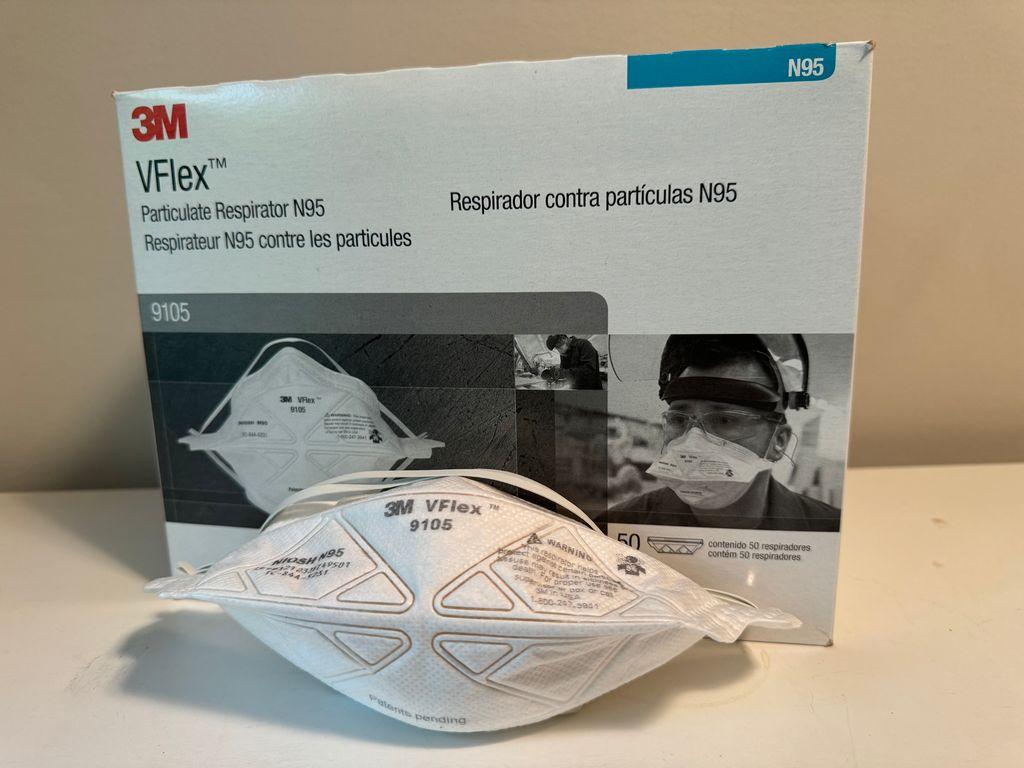Researchers who compared the ability of cloth and surgical masks and KN95 and N95 respirators to impede SARS-CoV-2 leakage into the environment show that the "duckbill" N95 won handily, stopping 98% of the virus that causes COVID-19.
A University of Maryland (UMD) research team, which published the findings last week in eBioMedicine, collected breath samples from volunteers with community-acquired COVID-19 infections starting in May 2020.
"The highly transmissible nature of rapidly emerging Omicron variants in the setting of high rates of vaccination and prior infection underscores the critical role of non-pharmaceutical interventions, such as wearing face masks, to reduce inhalation (airborne) transmission of the virus by reducing the amount of virus in the air," the study authors wrote.
With and without face coverings
Each volunteer provided two 30-minute breath samples on the same day, wearing a face covering for the first half of the session and then wearing no face covering for the other half. Some returned for a second session with other face coverings.
While providing breath samples, participants completed repeated vocalizations such as saying the alphabet, singing "Happy Birthday," and shouting. After completing a session while wearing a mask or respirator, they completed the same process while wearing no face covering.
Of the 44 volunteers, and 43% were women. Participants wearing a respirator with a nose clip were instructed to pinch it to fit their nose, and those wearing an N95 respirator were told to place one strap around their neck and the other atop their head. No other training was given, and fit-testing wasn't conducted to ensure a good fit on the face. Respirators, though, conform more tightly to the face than do cloth or surgical (medical) masks.
During the masked part of the sessions from June 2020 to December 2021, volunteers wore either their own mask (mostly cloth masks made with a wide variety of materials of sometimes unknown brands and sources) or a Kimberly-Clark Professional Kimtech M3 mask for their first research visit. If they returned for a second visit, they wore the other type of mask.
In December 2021, the researchers switched from testing cloth masks to Powecom KN95 respirators but also allowed volunteers to provide their own KN95s. Participants were randomly assigned to wear a surgical mask or KN95 in the masked part of their first research visit and the other option if they returned a second time.
In March 2022, inexpensive ACI 3120 Surgical N95 duckbill respirators from Armbrust USA were added to the testing mix. Volunteers were randomly assigned to wear either a surgical mask or a KN95 or N95 at their first visit until March 10, when the team stopped testing surgical masks. Starting on March 11, only N95s were tested.
The research team provided most surgical masks and KN95s and all N95 respirators, but some participants were able to use their own face coverings if study personnel deemed them well-fitted.
N95s as standard of care in healthcare settings
All masks and respirators reduced exhaled virus at least 70%, but the duckbill N95 reduced SARS-CoV-2 load 98% (95% confidence interval [CI], 97% to 99%) and performed significantly better than cloth or surgical masks or KN95s. Cloth masks impeded more virus than surgical masks and KN95s.
These results suggest that N95 respirators could be the standard of care in nursing homes and healthcare settings when respiratory viral infections are prevalent in the community and healthcare-associated transmission risk is elevated.
The study didn't test the face coverings as wearer protection against SARS-CoV-2 in the surrounding air.
"These results suggest that N95 respirators could be the standard of care in nursing homes and healthcare settings when respiratory viral infections are prevalent in the community and healthcare-associated transmission risk is elevated," the authors wrote.
Senior author Don Milton, MD, DrPH, professor of environmental health at the UMD School of Public Health, credits the N95's tight seal, powerful filter, and large air space for its success in blocking viral passage. "Our research shows definitively why it's so important to have non-pharmaceutical responses like wearing masks, and why we need studies like this to illuminate which masks are most effective," he said in a UMD news release.
Other factors to consider
Milton said that poor KN95 performance may have been due to its stiffness and poor fit. And Lisa Brosseau, ScD, CIH, an expert on respiratory protection and infectious diseases and a CIDRAP research consultant, agrees that KN95 filter performance can vary widely.
"It's important not to generalize anything about KN95 respirators from data for a single model," she told CIDRAP News via email. Brosseau, who was not involved in the study, also said it's possible the breath-collection device used in the study didn't collect all emitted virus particles.



















